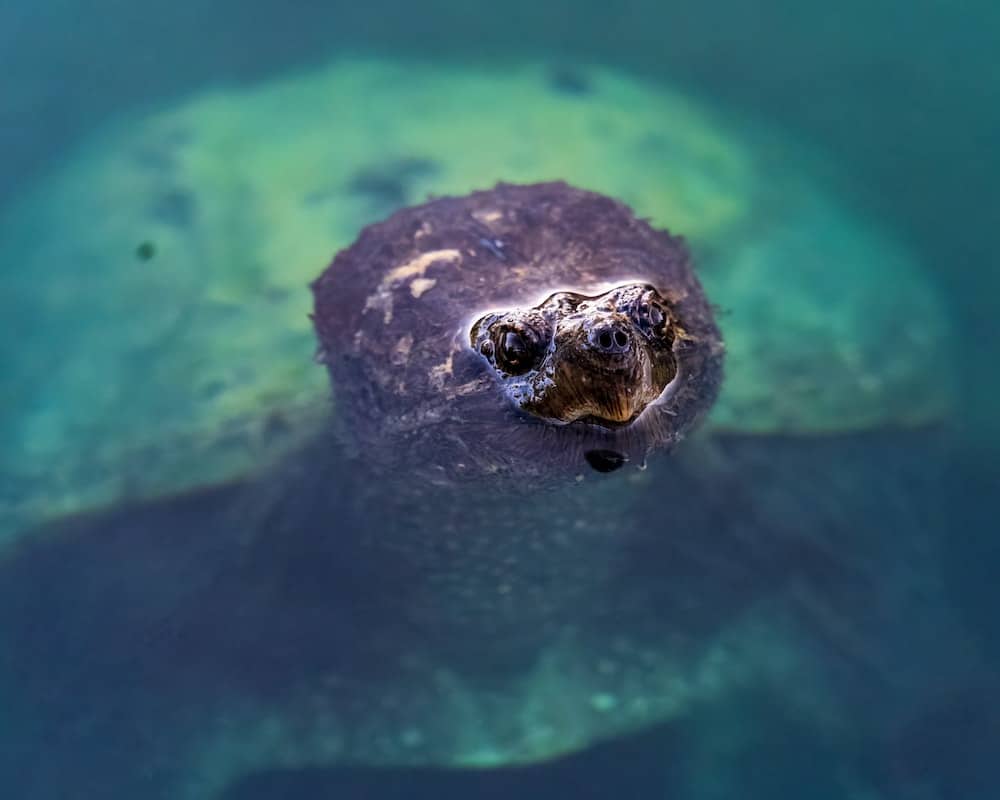Box turtles, with their distinctive shells and gentle demeanor, are fascinating reptiles that captivate the hearts of many reptile enthusiasts. As responsible caretakers, it is essential to create a suitable habitat that meets their specific needs. One crucial consideration is providing appropriate heating conditions, often achieved through the use of a lamp.
In their natural habitats, box turtles rely on external sources of heat to regulate their body temperature and maintain their overall health. These lamps simulate the warmth of the sun, playing a vital role in creating a comfortable and thermally balanced environment within captivity.
This article explores the necessity of heat lamps for box turtles, highlighting the reasons why these reptiles require supplemental heating, the benefits it offers, and important guidelines to ensure their well-being.
The Natural Thermal Needs of Box Turtles
Box turtles, similar to other reptiles, are ectothermic animals, which signifies that they depend on external heat sources to control their body temperature. In their natural habitats, box turtles bask in the sun to absorb warmth and raise their body temperature.
This thermoregulation process is vital for their metabolism, digestion, immune function, and overall well-being.
Box turtles have specific temperature requirements, typically ranging from 75 to 85 degrees Fahrenheit (24 to 29 degrees Celsius) in their basking areas. They also require a cooler side of the enclosure, around 70 to 75 degrees Fahrenheit (21 to 24 degrees Celsius), to retreat and regulate their body temperature.
Understanding the natural thermal needs of box turtles is crucial in replicating their native environment and providing appropriate heating conditions in captivity.
The Role of Heat Lamps In Captive Environments
In captive environments, heat lamps play a vital role in replicating the natural heating conditions that box turtles require for their well-being.
Replicating Natural Heating Conditions
Heat lamps play a crucial role in recreating the warmth that box turtles would experience in their natural habitats.
They provide the necessary heat source to help your pet regulate their body temperature effectively.
Facilitating Natural Behaviors
Heat lamps encourage box turtles to engage in natural behaviors, such as basking.
Basking helps with digestion, vitamin D synthesis, and overall physiological processes, promoting the turtle’s well-being.
Stimulating Appetite And Activity
The warmth provided by lamps stimulates the turtle’s appetite, ensuring they eat an adequate diet.
It also promotes an active lifestyle, as turtles tend to be more active when the environment is thermally suitable.
Creating Thermal Gradients
Heat lamps establish thermal gradients within the enclosure, allowing box turtles to choose between warmer and cooler areas based on their preferences.
This enables them to maintain their preferred body temperature and engage in natural thermoregulation.
Supporting Overall Physiological Balance
By providing proper heating conditions, these lamps contribute to the turtle’s overall physiological balance.
They help regulate metabolism, promote proper digestion, and support immune function, leading to better health and well-being.
Essential For Captive Turtle Care
Heat lamps are an essential component of maintaining a suitable habitat for box turtles in captivity.
They ensure that the turtle’s thermal needs are met, helping to replicate their natural environment and promoting their overall health and happiness.
Guidelines For Providing A Proper Lamp Setup
To ensure the well-being of box turtles, it is crucial to follow specific guidelines when setting up a lamp in their enclosure. Here are some essential considerations:
Choose The Right Lamp
Select a lamp specifically designed for reptiles, such as a ceramic heat emitter or a basking bulb. These lamps emit heat without light or harmful UV rays.
Position The Heat Lamp Correctly
Place the lamp at one end of the enclosure to create a thermal gradient. This allows these reptiles to move between warmer and cooler areas as needed.
Use A Temperature Regulator
Install a thermostat or temperature controller to maintain the appropriate temperature range. This helps prevent overheating or temperature fluctuations.
Monitor Temperature Levels
Regularly check the temperature using a reliable thermometer. Ensure that the basking area reaches the recommended temperature range of 75-85°F (24-29°C) while the cooler side remains around 70-75°F (21-24°C).
Provide A Basking Spot
Include a basking platform or a rock beneath the lamp, allowing these reptiles to comfortably rest and absorb heat. Ensure it is sturdy and large enough for the turtles to fully extend their bodies.
Maintain A Safe Distance
Follow the manufacturer’s recommendations regarding the appropriate distance between the lamp and the basking spot. This prevents the turtles from getting too close and potentially getting burned.
Regularly Clean And Inspect
Keep the lamp and its surrounding area clean from dust, debris, or any flammable materials. Inspect the lamp and its components for any signs of wear or damage regularly.
Remember, the specific setup may vary depending on the species of box turtle and the size of the enclosure. It’s crucial to research the specific requirements of your turtle species and consult with a reptile expert or veterinarian for personalized guidance.
Potential Risks and Considerations
While these lamps are crucial for box turtle’s well-being, it’s essential to be aware of potential risks and considerations associated with their use. Here are some key points to keep in mind:
Fire Hazards
The lamps can pose a fire risk if not properly maintained or positioned. Ensure the lamp is securely mounted, and away from flammable materials, and regularly check for any signs of damage or malfunction.
Burn Injuries
Box turtles may accidentally come into direct contact with the lamp leading to burns. Position the lamp at an appropriate distance and provide a barrier or platform to prevent direct contact.
Overheating
Inadequate temperature regulation or a malfunctioning thermostat can result in overheating the enclosure. Regularly monitor the temperature and use a reliable thermometer to ensure it remains within the recommended range.
Dehydration
These lamps can contribute to increased evaporation leading to dry conditions and dehydration. Provide ample access to fresh water and monitor humidity levels to prevent excessive drying of the environment.
UVB Supplementation
While these lamps provide warmth, they do not emit significant UVB radiation, which is essential for box turtle’s vitamin D synthesis and calcium metabolism. Consider using a separate UVB light source or providing access to natural sunlight.
Enclosure Size And Ventilation
These lamps generate heat, which can affect the enclosure’s temperature distribution and air circulation. Ensure the enclosure is adequately sized, well-ventilated, and allows for proper heat dissipation.
Species-specific Considerations
Different box turtle species may have varying temperature requirements. Research and understand the specific needs of your turtle species to provide the most suitable lamp setup.
It’s crucial to remain vigilant, regularly assess the enclosure conditions, and make adjustments as necessary to minimize risks and ensure the safety and well-being of your box turtles.
Alternative Heating Methods
Aside from lamps, there are alternative heating methods that can be considered for providing warmth to box turtles. These methods offer different advantages and considerations.
Heat Panels
One alternative is heat panels, which are flat heating units mounted on the enclosure’s walls or ceiling.
They provide uniform heat distribution and are energy-efficient, although they may come with a higher price tag and require professional installation.
Heat Tape Or Heat Cable
Heat tape or heat cable is another option, allowing for customizable heating areas by attaching them to the enclosure’s walls or floor.
They offer easy installation and consistent heat, but careful monitoring is necessary to prevent overheating.
Radiant Heat Emitters
Radiant heat emitters emit infrared radiation to warm the enclosure and do not produce light.
While they provide focused heating, some turtles may not perceive the warmth as easily as they would with a lamp.
Under-tank Heaters
Under-tank heaters, such as heating pads or mats, offer gentle heat from the bottom, mimicking the natural warmth from the ground. We have a blog post about some of the best turtle tank heaters you might be interested in reading.
However, they may not provide sufficient ambient heat and require careful positioning to prevent overheating.
Deep Heat Projectors
Deep heat projectors emit intense heat and infrared light, creating a concentrated basking spot. They can be beneficial but may require additional heating sources to create thermal gradients and necessitate careful regulation to avoid burns.
When considering alternative heating methods, it’s important to assess their effectiveness in meeting the specific needs of box turtles, the size and layout of the enclosure, and the ability to maintain proper temperature gradients.
Conclusion
In conclusion, providing proper heating conditions is essential for the health and well-being of box turtles in captivity. While heating lamps are commonly used, it’s important to consider the natural thermal needs of these reptiles and ensure the setup is appropriate.
Alternative heating methods, such as heat panels, heat tape, radiant heat emitters, under-tank heaters, and deep heat projectors, offer different options to meet the turtle’s heating requirements.




